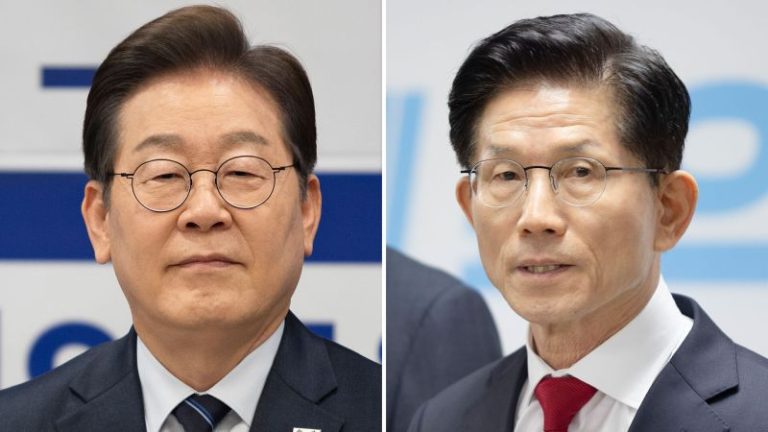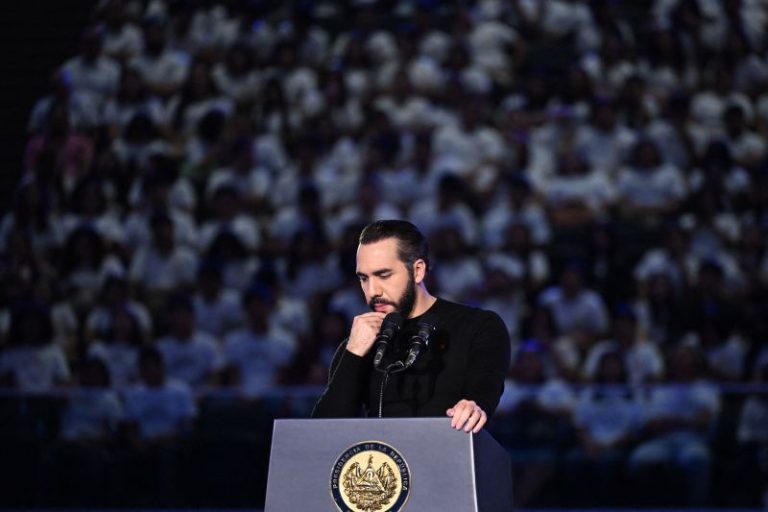Nayib Bukele, the self-declared “world’s coolest dictator,” will mark six years as El Salvador’s president on Sunday, a period defined by contentious reforms, which critics say have brought peace to the streets at an incredibly high price.
His iron-fisted crackdown on crime in the country, that was once the most violent nation in the western hemisphere, led to the arrest and detention of around 87,000 people, often with little due process.
The government has defended the move, pointing to significant reductions in gang violence nationwide, but opponents say it has come at the cost of mass incarceration and the erosion of civil liberties.
The dragnet expanded as time wore on to include civil society groups and journalists investigating official collusion with the country’s gangs, critics say.
On May 19, Ruth López, an anti-corruption lawyer for the human rights group Cristosal, who is also a prominent critic of Bukele, was detained by Salvadoran authorities for allegedly stealing “funds from state coffers.” However, López still has not been charged with a crime despite remaining in detention.
Soon after Lopez was arrested, Bukele’s government passed a law taxing foreign donations to NGOs like Cristosal at 30%, which rights groups have described as an existential threat.
“What we have seen is a massive concentration of power in (Bukele’s) hands,” Juan Pappier, deputy director for Latin America at Human Rights Watch, said of Bukele’s six years in power. Bukele’s rule has been “based on demolition of the checks and balances of democracy and increasing efforts to silence and intimidate critics.”
The reduction of gang-related crime in El Salvador has made Bukele popular in the Central American nation, so much so that he was reelected in a landslide victory last year, even though the country’s constitution had barred anyone standing for a second term. (Bukele’s allies in Congress eventually replaced the Supreme Court’s top justices with judges willing to interpret the constitution in his favor.)
Since March 2022, the country has been under a “state of exception,” allowing the suspension of numerous constitutional rights. In the capital San Salvador, many people say they now feel safe walking through neighborhoods once considered dangerous. Though they acknowledge the country has seen a massive increase in incarcerations and a suspension of rights, Bukele’s supporters believe the resulting peace and security has been worth the tradeoff.
Not everyone agrees.
Samuel Ramírez, founder of the Movement of Victims of the Regime (MOVIR), a human rights group that works with families of people believed to have been detained without due process, says thousands have been arrested over unfounded suspicions of being linked to gangs.
Bukele has previously admitted that some innocent people have been detained by mistake but said that several thousand have already been released.
Ramírez and other activists believe that many are too afraid to speak publicly.
“Here we see soldiers armed to the teeth in the streets, the police, even armored trucks in the streets — tanks. That’s synonymous with a country at war,” he said. “The gangs, for me, have already been neutralized. And now the war is against the people, so they don’t demonstrate, don’t speak out.”
Though he presents himself as a law-and-order leader, Bukele has long faced allegations that he negotiated the peaceful security situation in El Salvador through back-door dealings with the gangs.
In 2021, the Biden administration accused Bukele’s regime of bribing MS-13 and Barrio 18, two of the most notorious gangs in El Salvador, to “ensure that incidents of gang violence and the number of confirmed homicides remained low.” Alleged payoffs included cash, cell phones and prostitutes for imprisoned capos.
Bukele promptly denied the allegations, calling them an “obvious lie.”
But four years later, independent newsroom El Faro published an explosive interview with two self-styled gang leaders from Barrio 18 who claimed that, in exchange for hundreds of thousands of dollars in cash, they had intimidated voters into casting their ballots for Bukele during his 2015 bid for mayor of San Salvador.
The two men gang leaders also claimed that when he became president in 2019, Bukele had arranged that the most powerful gangs in El Salvador refrain from wanton murder and extortion, lest they make him look bad, El Faro reported.
Bukele has not yet responded publicly to their allegations, but obliquely referenced the reporting from El Faro in a post on May 10, sarcastically implying the only “pact” he made with the gang leaders involved putting them in prison.
The journalists from El Faro who broke the story fled the country before it was published, anticipating arrest.
He said seven of the publication’s journalists are facing arrest warrants for reporting on the alleged deals. Even so, he said the newspaper would continue its journalistic work. For the past two years, the publication has been running most of its operations in exile from Costa Rica.
“If there was any semblance of democracy left in El Salvador, it was in independent journalism,” said Noah Bullock, executive director of Cristosal.
‘We are under a dictatorship’
Last week, Bukele’s government passed a law taxing foreign donations to NGOs at 30%.
He had proposed a similar law in 2021, but it didn’t pass. In any case, Bullock says that it’s irrelevant whether any law is proposed, passed or tabled in El Salvador: after six years of virtually unfettered power, Bukele is a law in and of himself.
She said the law will make it impossible for them to continue working. It gives them three months to renew their registration as an NGO, but they don’t know how the process will work.
Grande’s assessment of the situation is unambiguous: “Right now, we can say very openly that we are under a dictatorship.”
Despite the growing outrage from rights groups, Bukele’s punishing penal system has won him fans.
US President Donald Trump has praised the crackdown and cut a deal with Bukele, who agreed to hold hundreds of Venezuelan deportees in El Salvador’s Center for Terrorism Confinement, alongside thousands of detained Salvadorans.
Known as Cecot, the mega-prison is considered the largest penitentiary in the Americas and is notorious for the spartan conditions, which rights organizations have denounced as inhumane.
“I think what is happening here is a kind of laboratory for what could happen in other countries,” NGO worker Grande warned. “Even the United States.”
During Trump’s April meeting with Bukele at the White House, Bukele suggested the US president follow his lead when it comes to mass detentions.
“Mr. President, you have 350 million people to liberate, you know,” Bukele said of the US population. “But to liberate 350 million people, you have to imprison some. You know, that’s the way it works, right?”
This post appeared first on cnn.com








